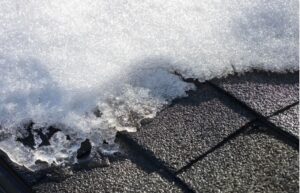Recycled Rubber Shingles
Calgary, Alberta-based Euroshield has been manufacturing recycled rubber shingles since 1999, using eco-friendly materials, including recycled tire rubber
Roofing shingles are one of the most innovative uses for recycled tires. Made of 75 percent recycled tire rubber and 25 percent recycled plastics and binding agents, rubber shingles are durable, long-lasting, and eco-friendly.
Recycled rubber roofing manufacturer, Euroshield Roofing Systems, says another benefit of rubber shingles is their energy-efficiency. Rubber is a good insulator that keeps buildings cool in the summer and warm in the winter, helping reduce energy costs and lowering carbon emissions. In areas of the United States and Canada with extreme weather conditions, such as hail and wind, rubber roofing materials are a game-changer that can save homeowners thousands on roof repair from hail damage.
Euroshield patented rubber shingles are known for their unique technology, durability, energy benefits, and sound protection. Rubber, once molded, will hold its shape over time making the shingles resistant to bending, curling, or cracking.
 Not only can rubber roofing be designed to mimic the look of other roofing materials (like slate or shake), but the electrons in rubber molecules are tightly bound and require tremendous force to break apart. Compared to other roofing materials, such as asphalt, clay, or metal, rubber shingles will stand up better against impact, offer higher insulation benefits, and provide soundproofing.
Not only can rubber roofing be designed to mimic the look of other roofing materials (like slate or shake), but the electrons in rubber molecules are tightly bound and require tremendous force to break apart. Compared to other roofing materials, such as asphalt, clay, or metal, rubber shingles will stand up better against impact, offer higher insulation benefits, and provide soundproofing.
Euroshield’s line of lighter colored shingles reflect sunlight, limit heat transfer into or out of the home, and maintain comfortable temperatures with less energy usage. Rubber’s natural sound dampening is also more effective metal, tile, or asphalt roofing. The shingles’ thick, recycled rubber absorbs sound vibrations from rain, hail, traffic, machinery, and more.
Euroshield’s specially designed interlocking system allows for expansion/contraction and helps prevent damage from UV rays, storm debris, hail, wind, and precipitation.
© Scrap Tire News, January 2024






